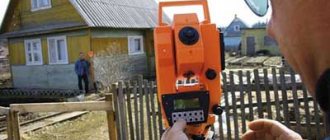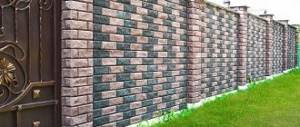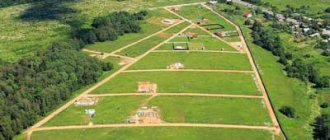In Russia, land owners have the impression that they can put up fences wherever they want and whatever they want. This idea is erroneous and can lead to litigation, which often ends in the dismantling of the structure. Particularly often, disputes arise over height and transparency. We’ll talk further about how to protect yourself from excesses associated with the construction of fences.
Fence between neighbors
Before installing a fence, take a few “steps” that will save time, nerves and money in the future. Find out what category the land belongs to, whether the charter of the partnership regulates the rules for the construction of fences between neighbors in terms of height and transparency. If not, then negotiate with them and make an agreement.
What is the maximum height of the fence between neighbors according to the law?
Most of the laws delimit the territories and powers of the gardening sector, however, given the level of resettlement of Russians, cottage villages are forced to develop regulations relating to all public lands.
It is also worth paying great attention to the quality of the built structure, especially when they make it themselves, without relevant experience. It is important to use common sense; if the fence casts a strong shadow or clangs from a passing car, many problems will arise.
The height parameters are limited to garden plots, garden plots, working farms, agricultural lands, and houses in the village. According to SNiPs, the values will be advisory in nature, however, this situation does not relieve the owner of the site from responsibility; it is worth following the rules prescribed by the charter of the partnership.
These types of land are mostly classified as industrial, rural, for urban the following classification takes place:
- Individual residential construction (IHC) – cottage households.
- Personal subsidiary plot (PHS) – land for keeping livestock, agricultural buildings, agricultural plantings.
For these types of plots, legislation does not limit the height of the fence; regulations are established by land use and development rules, which come directly from the municipality related to the district (region) in which the plot is located. These legal norms establish the size of fences and the distances between them. It is important to understand, however, if the structure obscures or blocks a neighbor’s house, he will have the right to seek arbitration protection.
Fire regulations
When planning a site, it is necessary to mark it correctly. While there is no permanent fence, you should put up a boundary post and stretch a cord along the border so that you can clearly see how much has been retreated to mark the foundation.
An individual residential building within the city must be surrounded by a temporary fence; just one boundary for marking will not be enough.
The developer shall provide adequate access to all buildings. In case of danger, a fire truck is required to approach all objects without using an adjacent area. Experience shows that in the event of a fire, every second matters.
The minimum distance from the fence to all buildings is at least 1 meter, for a residential building - 3 m. No outbuildings should be placed in front of the house, especially on the side of the road. It is also forbidden to plant trees that will block the passage.
Wooden houses should be located at a distance of 15 meters. For brick roofs with fire-resistant roofing, 6 meters is sufficient.
Why is the height of a fence in a village important?
The density and permissible height of fences are often determined by the desire to protect themselves from the outside world, due to the unprecedented urbanization and density of urban development. High solid fences protect against the following unfavorable factors:
- Intrusive neighbors constantly looking between the boards, wanting to communicate, can become a big problem. When going out into nature, you want to be alone with it, to avoid the gaze of uninvited guests.
- The solid high frame is a protection, it is difficult to climb over, the gate can be difficult to open, so this obstacle stops many intruders.
However, such fences are quite rare to find, this is due to a number of factors:
- The type of construction will become too expensive, how much a high fence will require materials: basic, related, more labor costs.
- Tall structures need to be strengthened; they reflect greater wind loads than lower counterparts.
- Finally, a high fence can simply create inconvenience for neighbors: it can cast a lot of shadows, block views, impede the growth of plants, darken windows, preventing daylight from entering the room. In addition, few people would like to see a bare wall. Due to the low, medium size, trees and roofs of houses are visible, which creates a certain kind of landscape; blank fences completely deprive this view.
Insolation requirements
The development scheme approved by the SES is also valid in 2019-2020. It also includes the requirement to comply with insolation standards. The rules prohibit:
- Close the viewing area from the window.
- Shade the windows of living rooms;
- Block air access, disrupting ventilation.
If you go to a construction forum, you can come across a huge number of complaints that neighbors have blocked air access, put up a high fence or planted a tree, so the rooms have become dark and there is no sunlight. In case of refusal to comply with the rules of insolation, an application is submitted, and the bailiff goes to the place to establish how many hours the sun illuminates the rooms and the garden. It also records the natural ventilation of the space or lack thereof.
When building tall structures, you need to retreat further from your neighbor's fence. Otherwise, the law will be broken, and then everything will have to be demolished. The cost of construction will increase many times over, as they will be forced to pay a fine.
The normal option would be to install a picket fence or a canvas with checkerboard-type gaps.
It allows light and air to pass through, but does not allow you to see what is happening in your yard. In such a situation, the owner of the neighboring plot will not be able to make any claims.
Watch the video below on this topic.
Standards for constructing a fence between neighbors in a private house
The law always protects the state along with persons who are disturbed by someone else’s fence. There are several important rules governing installation within individual housing construction:
- If the house is located near a high-traffic highway, the height, material, and dimensions of the fence must be coordinated with local authorities. In reality, the rule is ignored in 90% of cases, problems arise extremely rarely, but if a precedent appears, the law will be on the side of the authorities.
- On the street side, the height should not exceed 2.2 meters. There is a logical rationale for this rule: skylights are usually installed with a height of 2.5 meters, structures must be located below this mark, otherwise the regulatory approved lighting will not penetrate the areas properly, which is contrary to the letter of the law.
- Non-traumatic material should be used. Stretching barbed wire or fencing with untreated wood is extremely dangerous. If a passerby is injured by poor-quality fencing, the owner may have problems.
- Gates facing a roadway less than 1.5 meters wide open inward. This is due to completely objective reasons: the desire to leave your yard should not interfere with social movement.
- The separation of one household from another with a height of no more than 2.2 meters.
The SNiPs of the gardeners' association and dacha-type buildings regulated the height, however, in the new editions of SP 53.13330.2011 there is no direct information that initially the fence should consist of a chain-link mesh, transparent, neighbors can peacefully coexist, there are no blackouts, so this method is the highest priority. However, after the approval of other residents, it is possible to install other structures consisting of more fundamental building materials. Also, such decisions are made at a meeting of gardeners, collectively.
Actions if the land is in SNT, ONT or DNP
If the site belongs to dacha partnerships, gardening or vegetable partnerships, then there are regulations and laws that must be followed. This is a significant plus for the owner: no need to rack your brains, just follow the rules.
The procedure in this case will be as follows:
- Find the organization’s charter and study it (preferably with a lawyer). The document will describe all the nuances of such structures, down to the location and maximum height.
- Talk to neighbors and draw up a written agreement.
- Wait for the general meeting of members of SNT, ONT, DNP or coordinate your actions with the board.
- Ensure that the decision is documented.
- Proceed with construction without deviating from the original design, height and location.
It is important to remember that the fence should not violate the boundaries of the plots. Sometimes a deviation of even 10–20 cm leads to quarrels and long-term hostility. To avoid this, it is better to order a land surveying procedure.
Standards for installation of fences
The main document regulating the development of plots in TSN, which from 2021 includes dachas, is SNiP 30-02-97. Until recently, clause 6.2 of these rules stated that the maximum height of fences should not exceed 1.5 m. However, since 2019, SNiP does not regulate this point. Currently valid are SP 53.13330.2011. This is SNiP 30-02-97 with amendments, but the new sanitary rules do not regulate fencing height standards.
The fence parameters are now determined by the charter of the organization to which the land plot belongs. In addition, one must be guided by Article 10 of the Civil Code of the Russian Federation, which states that a citizen cannot exercise his rights to the detriment of the rights of other persons. In other words, you have the right to put it up, but you don’t have the right to deprive your neighbors’ plot of sunlight.
It is for this reason that SNiP recommends the use of mesh material (chain-link) for the construction of fences between neighbors, and a blind fence can be erected on the side of the street or driveways, if this does not contradict the Charter of the partnership.
Installing a chain-link mesh is a win-win option
Possibility of installing a fence between neighbors
Maintaining good relations is the basis of the unspoken code of neighborly camaraderie. However, luck is rare; you meet people from whom you want to protect yourself as much as possible. If the developer really wants to install a high fence, there are a number of recommendations on how this can be done. There are SP and SNT documents dictating installation requirements along the border of the site. The most thoughtful summer residents and homeowners build a decorative frame on the boundary line, which complies 100% with all legal standards, then retreat deeper into their site, erecting a permanent structure there. Formally, this does not entail any violations; the documentation will contain the designation “structure or other buildings.”
Step by step, according to SNT, structures are installed in the following order:
- The process of land surveying is carried out, all data is entered, and the relevant documentation that must be stored.
- It is better to accompany the land surveying process with natural demarcations: ask the land surveyors to place pegs where the potential fence will go. Take as many photographs as possible, recording this action of the officials.
- The boundaries of the site are built up with a building that fully complies with the standards of SNT and SP. It is better to lay an additional 10-20 centimeters deep into your site. Use a geodetic ruler to take special measurements. All processes must be photographed; in case of conflicts, this is a good evidence base. A fence “to divert attention” is necessary so that neighbors, if they wish, cannot prove the cadastral shift of the boundaries of the site. The ideal option is to insure the newly built building.
- Next, retreating 1 meter, a capital structure is erected of the size required by the developer. It is important to maintain the value of 1m, because this is a constant distance between buildings.
- In case of unforeseen litigation, all checks, contracts, invoices should be kept so that later, if necessary, they will serve as evidence. It is much more difficult for the court to make a decision when it is clearly shown that the developer will suffer personal losses.
Neighbors who may not like a large fence will complain about the lack of natural ventilation, deterioration in plant growth, there are many versions and causes of litigation. However, it is extremely difficult to prove these points, and a developer who has followed the clearly step-by-step recommendations given above will have a strong evidence base, weighty arguments, supported by relevant documentation and photographic materials.
How to install a fence correctly
The first rule: the line of the fence, namely its front side, must strictly correspond to the border of your site. In the eyes of many homeowners, this looks like complete nonsense: what happens if I borrow an extra 10 - 20 centimeters? And the following will happen. Representatives of the fire department, representatives of the planning and development committee of urban and rural settlements, representatives of the land committee may visit you and oblige you to remove the fence of the territory that does not belong to you, impose sanctions on you and even open an administrative and sometimes criminal case against you for the fact of illegal appropriation of land holdings.
Previously, instructions were established by law for all standards for the placement of fences, which covered aesthetic aspects, fire safety aspects, and sanitary standards. Now there is no such document, there are only rules that are advisory in nature.
According to the recommendations:
- within the city limits or densely populated villages, you can only build a fence within the boundaries of your property with a height of no more than 1.5 meters and transparency from 50 to 100%.
That is, you can install a low fence from a rare picket fence or chain-link mesh. Again, the word “recommended” means that officials cannot prohibit you from building a thicker and higher fence. In principle, if the fence does not spoil the appearance of the entire street, then good for you.
There are also sanitary standards that may limit your choice of material. For example, if your solid brick fence blocks the flow of wind that begins to bend around it and create a “pipe effect” on the street, and someone complains about such an inconvenience, then this is enough to oblige you to thin out your fence. But that's not all
- A fence adjacent to neighbors can be no more than 175 cm in height and transparency from 100 to 50%. The material should not heat up the neighbors’ area (iron), not retain excess moisture (concrete or brick) and not be toxic or hazardous to health. Also, your fence should not obscure your neighbors’ property. But if you sacrifice a meter of your plot and move the fence deeper into your property, you have every right to build a fence 200 - 300 cm high and with 0% transparency. All the above-described inconveniences from the fence will in no way affect the neighbors, since your property will also be outside the fence. The material used to make the fence is not regulated.
- Particular attention must be paid to fire safety rules. It is thanks to violations of the rules for placing fences that when one house catches fire, it is not uncommon for an entire street to burn out. Fences do not allow the fire crew to localize the source of the fire in a timely manner, and the fences themselves, built of wood, often spread the fire. In relation to buildings, fences must be placed at a distance of at least 1.5 meters from the wall. It is unacceptable for the fence to come close to the wall of the building. A fire department representative has the right to fine you for such very serious violations. The only thing that saves most landowners is that the firefighters themselves do not always know these standards, and houses are often built in such a way that there is barely 1.5 meters between them, let alone a fence.
Violations from neighbors
There is a term “insolation”, which means exposure to sunlight and ventilation. If a neighbor has erected a high fence, such arguments will seem unconvincing to the judge; there is no legal framework defining shading and the damage caused as a result.
The first instance to contact is a gardening or dacha association to complain about violations of fencing standards, often they are specified in the charter. Going to court is often ineffective. Relying on SP, SNT, the evidence base will not be enough. This situation will most likely be resolved by Article 304 of the Civil Code of the Russian Federation “Protection of the owner’s rights from violations not related to deprivation of possession”: The owner may demand the elimination of any violations of his rights, even if these violations were not associated with deprivation of possession. The most difficult thing is to prove to the court that the defendant deliberately violated the rights by installing such a high structure, intentionally infringed on the interests and rights of the plaintiff.
Illumination and ventilation are weakly provable values. They are not prescribed in the charters, the value cannot be fixed. However, the harvest will play an important role in horticultural disputes. Having proved that the bulky fence interferes with cultivation and causes real losses, the court may take the plaintiff’s side. The amount of harvest measured in kilograms is unlikely to seem like good evidence; collecting it is quite problematic, but the appearance of the product can significantly deteriorate, which can be proven with the help of photographs and testimony. When going to court, you should discard the hope of protecting building regulations; if the structure really interferes with life, you should begin to collect an extensive evidence base.
Owner's rights
The rights of the owner are indicated by Articles 40 and 41 of the Land Code of the Russian Federation (hereinafter referred to as the Land Code of the Russian Federation), according to which the owner, land user, landowner and tenant have the right:
1) use, in the prescribed manner for one’s own needs, the common minerals available on the land plot, fresh groundwater, as well as ponds and irrigated quarries in accordance with the legislation of the Russian Federation;
2) erect residential, industrial, cultural, social and other buildings and structures in accordance with the intended purpose of the land plot and its permitted use in compliance with the requirements of town planning regulations, construction, environmental, sanitary and hygienic, fire safety and other rules and standards;
3) carry out irrigation, drainage, agroforestry, cultural and other reclamation works in accordance with the permitted use, build ponds (including those formed by water-retaining structures on watercourses) and other water bodies in accordance with environmental, construction, sanitary and hygienic and other requirements established by law special requirements.
That is, based on what has been said, its owner has no obligation to fence his plot of land. The owner independently decides whether he needs a fence or not.
The height of fences in a cottage community between neighbors
Land use and development rules (LRU) regulate the location of structures on private plots of cottage villages. It establishes territorial zones, urban planning regulations, the procedure for applying such a document and the procedure for making changes to it. The document is created by local (regional) self-government bodies.
Theoretically, you can put up any fence, even 3 meters high, but it is better to initially record your intentions in writing and get permission from your neighbors for such construction.
Obtaining permission to build a boundary fence
After agreeing on the boundaries of neighboring plots, it is necessary to obtain permission to erect a boundary fence. It is a document that gives the owner of the site the right to construct the declared object, that is, a boundary fence, and also confirms that the object complies with the construction requirements of the administration of the locality.
An approved permit for the construction of a boundary fence will help avoid unpleasant consequences. For example, administrative liability in the form of a fine and (or) dismantling of the fence.
Local government authorities, that is, the administration of the locality on whose territory the neighboring plots are located, can issue the appropriate permit. As a rule, this issue in local governments is dealt with by the architectural (urban planning) department. In addition, an administration specialist involved in architecture and urban planning can first explain the construction requirements in force in a given locality, including the permissible dimensions of a fence between neighbors in the private sector.
In order to obtain permission, the owner of the site will need to submit the following documents:
• Application addressed to the head (head) of the administration.
• Documents confirming ownership of the plot and cadastral plan.
• Act on the coordination of the boundaries of neighboring plots.
• Boundary plan.
• A written agreement with neighbors to exceed clearance or height standards, if any.
The lack of necessary documents or non-compliance of the plan for the future building with the requirements of SNiP may be the reason for refusal to issue permission to install a boundary fence.
What you need to know about fence height standards
Regional self-government bodies are obligatory censors of the height of structures. SNiPs regulate the entire development system, but local laws only rely on this document, creating their own rules.
Fire safety standards remain undeniable. If the relevant services determine a threat from the building, demolition is ordered.
The regional municipality is based on the specific weather conditions of the region, altitude above sea level, and the nature of the winds. A fence that is too high and installed on wooden supports can fall in a strong wind, becoming a threat to the lives of passers-by.
When buying a house, rebuilding a house (or even owning land), it seems that you can do whatever you want, because this is your own property. Realities are far from these statements, due to life in the sector, they are guided by the rules of isolated life within the village. Along with apartment buildings, fair possessions are regulated by various documents. Structures that are susceptible to rapid fire are also installed at a certain distance. When choosing buildings of non-standard types and sizes, it is necessary to carefully study the legislative framework of this issue. Otherwise, ignorance will not relieve the developer from responsibility. Courts often order dismantling. Sometimes it's worth taking the opportunity to negotiate.
Fencing the entrance to the land plot
The entrance to the site is fenced by installing gates and barriers.
Gates closing the entrance can have different designs:
- recoil;
- swing;
- lifting;
- sectional.
Sliding gates made of corrugated sheets
According to the method of operation, they can be automatic or with manual opening. When installing swing or sectional gates, it is necessary to provide for the possibility of opening them so that the doors or their elements do not extend beyond the red line of the site. This is possible if the fence is slightly away from the red line. Otherwise, you will have to provide for opening the gate inward.
When constructing a gate, it is better to use the same materials from which the fence is made. This way the overall appearance will be more harmonious. However, sometimes you can combine a solid fence with a transparent gate. This entrance also looks good.
Gates made of monolithic polycarbonate
SNiP recommendations: fence transparency
Another important requirement for boundary fencing is the transparency of the structure. To prevent neighboring areas from being obscured by the new fence between neighbors in the private sector, SNiP requires the installation of a fence with a transparency of at least 50%. What does this mean? The fence between neighbors in the private sector (see photo in the article) should be mesh or lattice.
Suitable materials for installing a boundary fence will be:
• Wood: wooden picket fence, vine, etc.
• Rabitz.
• Metal (forged fencing).
Other options that meet the specified requirements are also possible. For example, a hedge. Installing a blind fence between neighbors in the private sector is prohibited by SNiP. Installation of an opaque fence is possible only under a written agreement with the owners of the neighboring land plot.





